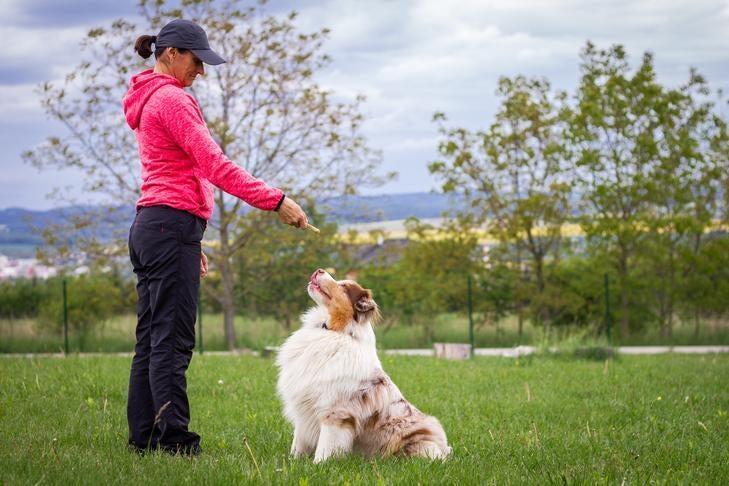When it comes to training our beloved canine companions, the methods we choose can significantly impact their behavior and our relationship with them. One approach that often sparks debate among pet owners and experts alike is spanking. Does it really work, or could it potentially cause more harm than good? In this article, we’ll explore the effectiveness and implications of using spanking as a disciplinary tool for dogs. We’ll delve into the psychology behind canine behavior, examine alternative training methods, and provide guidance on how to foster a loving, respectful bond with your furry friend. Whether you’re a new pet owner or a seasoned dog lover, understanding the nuances of effective training can lead to a happier, healthier life for both you and your dog.
Understanding Canine Behavior and Discipline
When it comes to managing your furry friend’s behavior, it’s crucial to understand the intricacies of canine psychology. Dogs, much like humans, respond better to positive reinforcement than to punishment. Spanking a dog is not only ineffective but can also lead to fear and anxiety. Instead of resorting to physical discipline, consider employing methods that focus on understanding and guiding your dog’s behavior in a constructive manner.
- Positive Reinforcement: Reward your dog with treats or praise when they exhibit good behavior. This method encourages them to repeat the desired actions.
- Consistent Commands: Use clear and consistent commands to help your dog understand what is expected of them. Consistency is key to effective communication.
- Redirecting Energy: If your dog is engaging in unwanted behavior, redirect their energy towards a more appropriate activity or toy.
- Patience and Understanding: Remember that learning takes time. Be patient and understanding as your dog adapts to new expectations.
By adopting these positive approaches, you not only foster a healthy and trusting relationship with your pet but also create an environment where both you and your dog can thrive together.
Exploring Alternatives to Spanking for Effective Training
When it comes to training our furry friends, it’s essential to focus on methods that foster a bond of trust and respect. Instead of using punitive measures, consider positive reinforcement techniques that can be both effective and nurturing. Here are some alternatives to help guide your dog’s behavior:
- Clicker Training: Utilize a clicker to mark desirable behavior, followed by a treat. This method is effective for teaching new commands and reinforcing good behavior.
- Redirecting: If your dog is engaging in unwanted behavior, gently redirect their attention to a more appropriate activity, like a chew toy or a game of fetch.
- Consistent Commands: Use clear and consistent commands to help your dog understand expectations. Reinforce these commands with positive rewards when followed correctly.
- Time-Outs: If your dog misbehaves, calmly remove them from the situation for a brief period. This can help them understand the consequences of their actions without fear.
- Patience and Persistence: Training takes time. Be patient and consistent, celebrating small victories along the way.
These methods not only encourage desired behaviors but also build a strong, loving relationship between you and your dog. By opting for compassionate training techniques, you create an environment where learning is fun and rewarding for both you and your pet.

Building a Trusting Relationship with Your Dog
Creating a strong bond with your dog is rooted in mutual respect and positive reinforcement. Rather than resorting to spanking, which can erode trust and cause fear, consider more constructive methods to guide your pet’s behavior. Dogs thrive on understanding what pleases their owners, so focus on rewarding the behaviors you want to see more often. Here are some effective strategies:
- Positive Reinforcement: Reward good behavior with treats, praise, or playtime. This encourages your dog to repeat those actions.
- Consistent Commands: Use clear, consistent commands to avoid confusion and help your dog understand expectations.
- Patience and Understanding: Remember that learning takes time. Be patient and compassionate, recognizing that mistakes are part of the process.
- Engaging Activities: Keep your dog mentally and physically stimulated with activities and games that cater to their natural instincts.
By fostering an environment of trust and understanding, you not only enhance your dog’s well-being but also create a joyful and fulfilling companionship that lasts a lifetime.
Positive Reinforcement Techniques for Lasting Results
Incorporating positive reinforcement techniques can lead to more harmonious and lasting behavioral changes in dogs. This approach is grounded in the idea of rewarding desired behaviors, which encourages dogs to repeat them. Instead of resorting to punitive measures, consider these effective methods:
- Clicker Training: Use a clicker to mark the exact moment your dog performs the desired action, followed by a treat. This helps your dog understand which behavior is being rewarded.
- Treats and Praise: Offer a small treat or verbal praise immediately after your dog follows a command or behaves well. Consistency is key to reinforcing positive actions.
- Playtime as a Reward: Engage in a game of fetch or tug-of-war as a reward for good behavior. This not only reinforces the behavior but also strengthens your bond.
- Affection: A simple pet or cuddle can be a powerful reward, especially for dogs that crave attention and love.
These techniques foster a nurturing environment where your dog feels safe and eager to learn. By focusing on positive reinforcement, you create a framework of trust and mutual respect, paving the way for lasting behavioral improvements.

